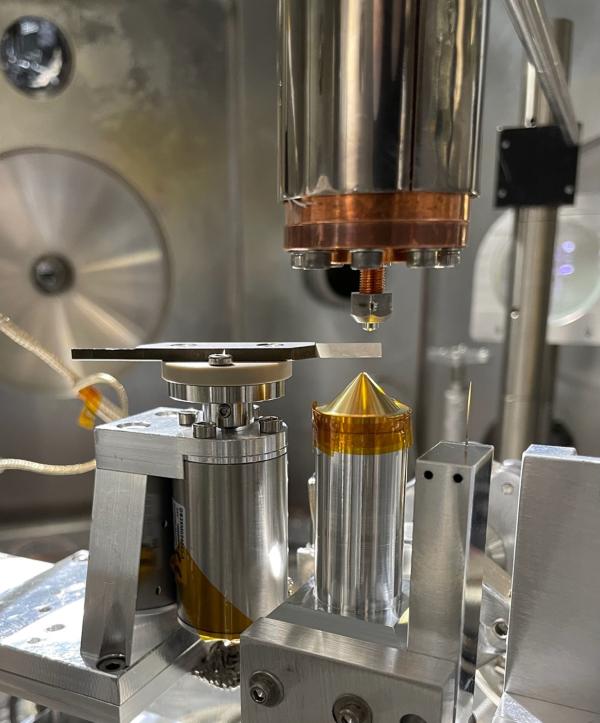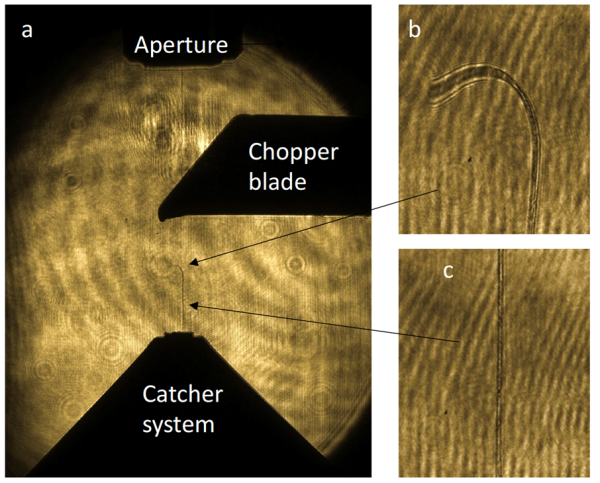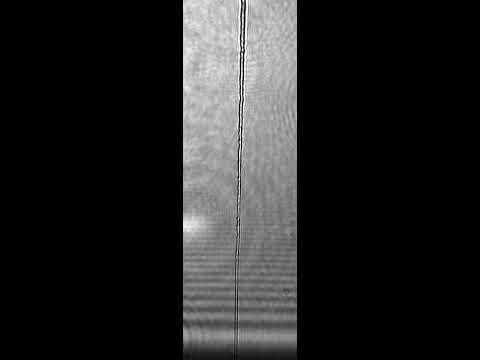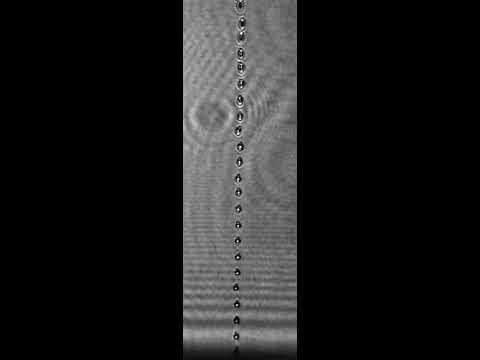Target Development
X-ray Free Electron Lasers such as LCLS-II and European XFEL can now deliver X-ray thousands of X-ray pulses per second, but this needs systems that can deliver targets quickly enough to take advantage of this. Our group is working on delivering liquid jets, at both ambient and cryogenic temperatures, which will allow us to create and probe high energy density states at higher repetition rates than ever before.
Cryogenic Hydrogen
Our cryogenic liquid target system delivers a high-velocity, continuous, micron-sized liquid jet, allowing high-rate operation with rapid target insertion (up to kHz), alignment, and minimal production of debris. It can produce various target geometries, from cylindrical (5 - 10μm), spherical droplet (10 - 20μm) to planar sheet (0.1-7 μm x 10-40 μm) and can produce pure samples from a variety of low-Z gases such as hydrogen, deuterium, and higher-Z gases like neon, argon and krypton.

At LCLS, cryogenic jets have been used with moderate laser intensities at the MEC and CXI end stations, and PW class laser facilities in the US and around the world, including the Texas Petawatt Laser facility at UT Austin, the DRACO laser at the Helmholtz-Zentrum Dresden-Rossendorf (HZDR) and the PHELIX laser at the GSI Helmholtz-Institute in Darmstadt, Germany. These experiments allow us to study particle acceleration mechanisms for intensities above 1021 W/cm2.
Frequently, the jet hardware is damaged by the high intensity laser-target interactions, either instantaneously or over the course of a beamtime. To address this, the interaction point can be moved farther away from the aperture, but this decreases target pointing stability and hence laser-target overlap. Instead, our collaborators at HZDR have developed a mechanical chopper which blocks line-of sight between the interaction zone and the nozzle when the laser pulse hit the target, while not affecting the jet in the interaction region.

The design, development and testing of the cryogenic liquid jet platform, shown to the right, is performed at our in-house Sector 10 laser laboratory. Using our 1 kHz laser system we can study any effects of high repetition rate experiments on the jet and chopper performance. Since the stability of the cryogenic jet system is heavily influenced by the quality of the vacuum, a jet-catcher system has been developed to remove most of the liquid shortly after injection. Testing in our laboratory has shown that this design improves the vacuum chamber pressure during operation by an order of magnitude.
The image to the right shows the chopper, jet and catcher in operation. This involves the aperture, the rotating blade chopper, and the catcher system at the bottom. The momentum transfer from the blade causes a small curl at the edge of the jet resulting in a deflection of the target within the first 0.5mm below the cutting point. This gap is directly determined by the speed of the jet which typically decreases for jets with higher atomic charge number, such as argon and krypton. In all cases, the target is unaffected further down the jet, at the laser interaction point, allowing continuous operation.
Jet geometries
The videos below illustrate our various jet geometries.
- Cylindrical jet with a diameter of 5 μm (diameters of 2 μm and 10 μm have been demonstrated).
- Flat jet (30 μm wide and about 1 μm thick), which is slowly rotated to illustrate the shape.
- Droplet jet with 6 μm diameter.
All these jets emanate from the nozzle at a speed of approximately 100 m/s and are thus well-suited for experiments at high repetition rates. These jets have been successfully fielded in experiments that have characterized the structure of hydrogen [3] and for proton acceleration [4]. Recent experiments have already demonstrated energies with tens of MeV protons at high repetition rates.
This work is supported through DOE Fusion Energy Science, FWP 100182. Patent pending for Stanford University to 'H Flat Jets for Proton Therapy', inventor Siegfried Glenzer, Sebastian Goede and Jongjin Kim.
Cylindrical H2 Jet
E = 20 MeV at 1 Hz
Flat H2 Jet
Improved Dose
Droplet H2 Jet
Improved Emittance

SLAC HEDS | Cylindrical Hydrogen Jet

SLAC HEDS | Flat Hydrogen Jet (Improved Dose)

SLAC HEDS | Droplet Hydrogen Jet (Improved Emittance)
References
Liquid Jet
Lorem ipsum
